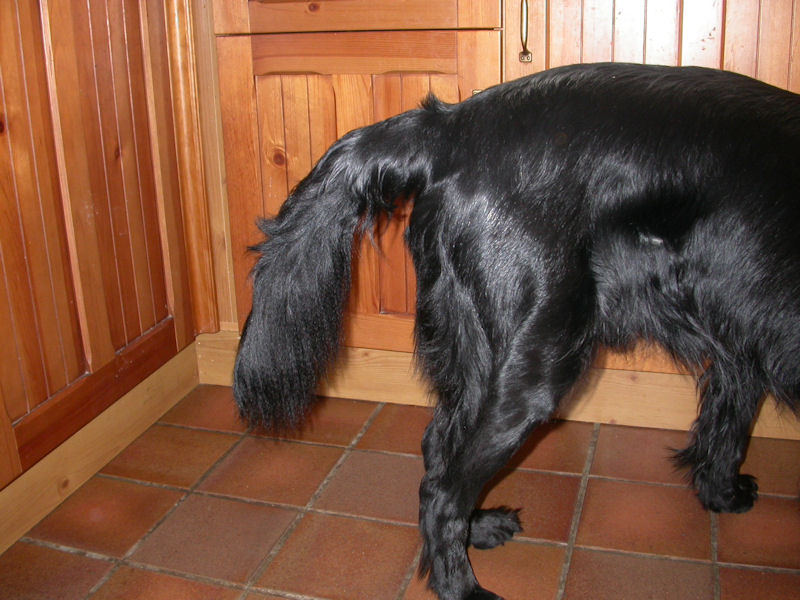Limber tail syndrome is a disorder in dogs that typically affects large breed dogs that cause the dog’s tail to become flaccid generally after spending too much time playing in the water or overuse while playing. This form of overexertion can cause a strain on the muscles used to keep the tail and tail wagging. The base of the tail is always rigid along with the tail limpness, and the dog can feel pain.

Causes and Symptoms of Limber Tail Syndrome in Dogs
This disorder is caused by discomfort and swelling at the base of the tail due to overwork or stress injuries. It is suspected that the discomfort and swelling of this condition is partially caused by the insufficient supply of blood to the muscles that regulate the tail. There are situations that could cause this syndrome, including:
- Long-term containment of the crate
- Swimming
- Cold water bathing
- Wet, cold weather
- Hunting
Pressure at the base of the tail causes much of the effects of the tail of the leg. The pain can prevent the dog from using the tail, or at least cause the dog to avoid using the tail. When anything like this happens, one might not understand how important the tail is to daily dog stuff. With this in mind, the limber tail can show the following symptoms:
- Limp, hanging tail
- Constantly changing positions
- Trouble rising or walking
- Delay or discomfort defecating
- Diminished or absent appetite
If your dog has enough discomfort to display some of these symptoms, visiting your veterinarian is the best option for proper care and treatment to make your dog more stable. Any of these symptoms can also signify other severe conditions that need urgent treatment.
Recommended: visual rapid test for the qualitative detection of Dirofilaria immitis antigen
What Treatments Are Available?
- Get your dog tested by your vet: to make sure there is no bone damage or other health concerns. Vets will take an X-ray and perform a blood test to check for an enzyme that will be present if there is muscle damage.
- Anti-inflammatory drugs: your vet can recommend these, but please do not self-medicate your dog, as this may cause more problems. Always get your vet to prescribe the right dose and treatment.
- Warm packs: a warm pack will help heal your dogs. Placing a warm pack at the base of your dog’s tail will help with recovery.
- Rest: your dog might want to rest to recover quickly.
With some simple medication to help your dog remain relaxed and well rested, the problem should be fixed after a week or two. If you still have any questions after this time, check in with your vet.
Also Read:
- 9 Best Human Foods For Your Dog
- 7 Ways to Show Love to Your Pet Dog
- How To Take Care Of Your Dogs During The Monsoon?
- Five Tips To Choose The Right Dog Trainer
What should I do to support my dog and avoid limber tail syndrome?
- Rest
- Warm packs applied gently to the affected area;
- Pain killers recommended by your vet
- Avoid excessive exercise
- Plan a proper fitness exercise routine for your dog.
- Stop your dog being submerged in water at high temperatures or for extended periods of time.
- Dry your dog thoroughly after swimming
- If it’s cold, keep your dog warm and dry, preferably with a warm blanket.
- On long journeys, plan rest stops to encourage your dog to travel and stretch their legs.
